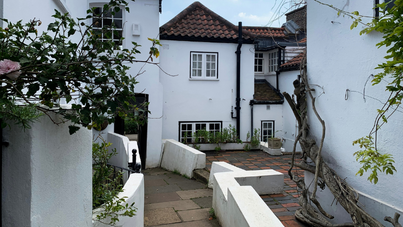Author
An easement is a right one property has over another. There are many types of easements but the most common that are found in residential conveyancing are rights of way, rights to use services and rights of access. When you purchase a property, we will look at the title to make sure the property has the benefit of the easements it requires.
For example, if the property you were proposing to purchase was only accessible by driving on a road that is owned by your neighbour, we would need to ensure that you had the right to do this. Without an easement you would have no right to use that road and would not be able to access your property, which could be potentially detrimental to the value of your property.
In some instances, if a right has been exercised for a prolonged period of time, we can seek to claim a prescriptive easement supported by an absence of easements indemnity insurance policy. Whilst this offers some protection, a legal easement would be the preferred option, where it is available.
Whilst in a lot of cases the easements required for a property will be noted on the title when you purchase, you can create new ones as the need may arise during your ownership.
In order to create an easement four characteristics need to be met.
-
Dominant and Servient Land
There must be two separate and identifiable pieces of land. These parcels are known as the dominant and servient land.
-
The Dominant and Servient owners must be different people
The owners of the land must be different people for an Easement to be granted, at the time it is granted. It would not be necessary to grant an easement over land you own.
-
The Easement must be to the benefit of the Dominant Land
The benefit of the right must be for the dominant land and the burden must be for the servient land. The benefit and burden of the easement will attach to the land and thereby bind and affect any successors to the title.
-
The right must adhere to the legal formalities
As an easement is a registerable property right, it needs to meet the legal requirements to be granted by a deed.
The most common way of creating an easement is by deed. This deed would record the fundamental details of the right which would need to be agreed with both property owners. Some of the points which are likely to feature in the deed are;
- What kind of right is being granted;
- The route the right will take (with a plan to demonstrate this);
- Who will be responsible for maintaining the right; and
- What cost (if any) will the dominant land pay the servient land for the right.
When the terms have been agreed between the dominant and servient owners, and the document is signed and completed, the deed is sent to the Land Registry where it will be registered and noted against both the dominant and servient titles.
FAQs
Does the easement stay with the property?
Yes, the easement is not granted to the owner but to the property and will remain in place after the property is sold. It will bind both the dominant and servient tenements.
Should I pay for an easement?
In most cases the dominant landowner will pay the servient landowner for the right. The amount you pay will depend on the type of right and how much the values of the properties would rise or fall as a result of the easement. We would recommend that you instruct a valuer to assist with this.
How do I end an easement?
The most common way to end an easement is by a deed of release. Once both parties have agreed to end the right the deed is signed and lodged with the Land Registry and the easement will be removed from the title registers.
There are other, less common ways of ending an easement which include:
- Abandonment – where the right has not been exercised for a prolonged period and the dominant land has made an alteration to their land to show that they will not use the easement in the future.
- Merger – when the dominant and servient land are owned by the same person or entity, often referred to as “unity of title”.
- Expiration – when the easement was granted for a specific period of time and this has now expired.
Who is responsible for maintaining a right granted by an easement?
If the easement is going to be granted by a deed this is one of the points you will need to discuss with the other party and have documented in the deed. Making sure this point is agreed upon at the beginning of the matter will be important to avoid disputes later on.
If the deed does not detail who is responsible for maintenance, or if the easement was not created by a deed, then neither the dominant or servient owners are required to maintain the right. However, in practise the dominant owner is likely to want to maintain the right for their continued use and must bear the costs of doing this.
What is a prescriptive easement?
Prescriptive easements occur not by a formal deed but by historic use of a right. In order to have a prescriptive easement noted on the title the owner of the dominant land needs to show the following;
- That they (or previous owners) have exercised the right for 20 years
- That the right has been exercised in the same manner for those 20 years
- That they have not exercised the right with force, stealth or had permission
If it can be shown that these criteria have been met an application to the Land Registry would be made to claim this right. The Land Registry would then assess this application and, if they agree, will issue a notice to the servient landowner. The servient landowner will then have an opportunity to object if they wish. If there are no objections the right will be noted on both titles. If there are objections the Land Registry may refer it to a Tribunal.
The Land Registry requires substantial evidence to grant a prescriptive easement and there is currently a three month wait for the Land Registry to look at the application. The costs for prescriptive easement applications can be high depending on any objections that may be made. Where possible creating the easement by deed would be preferable.
What is an absence of easement indemnity policy?
An indemnity policy is a form of insurance that will protect you if there is a problem with the title to the property you are planning on purchasing that cannot be resolved. In the case of easements this would be used if the seller had been exercising a right, but this was not formally noted on the title.
The absence of easement indemnity policy would protect you from financial losses that may occur if the owner of the servient land prevented you from using the right. Policies vary but most will cover losses relating to a reduction in market value, legal costs, damages and compensation as well as others. It is very important to read the terms of the policy to make sure that the level of cover it offers is sufficient, we will advise you on this during the transaction.
The costs associated with indemnity policies varies depending on the value of the property and the type of easement that it relates to. Depending on the circumstances it could be paid for by the buyer or the seller.
Author
Michelmores Property Development Club
The Michelmores Property Development Club (PDC) is a forum for developers and property professionals to connect and share knowledge. The Club is celebrating its 22nd...
Michelmores Property Awards
Celebrating the best of property, development and construction in the South West The Michelmores Property Awards celebrate the best property, development and construction projects in...



